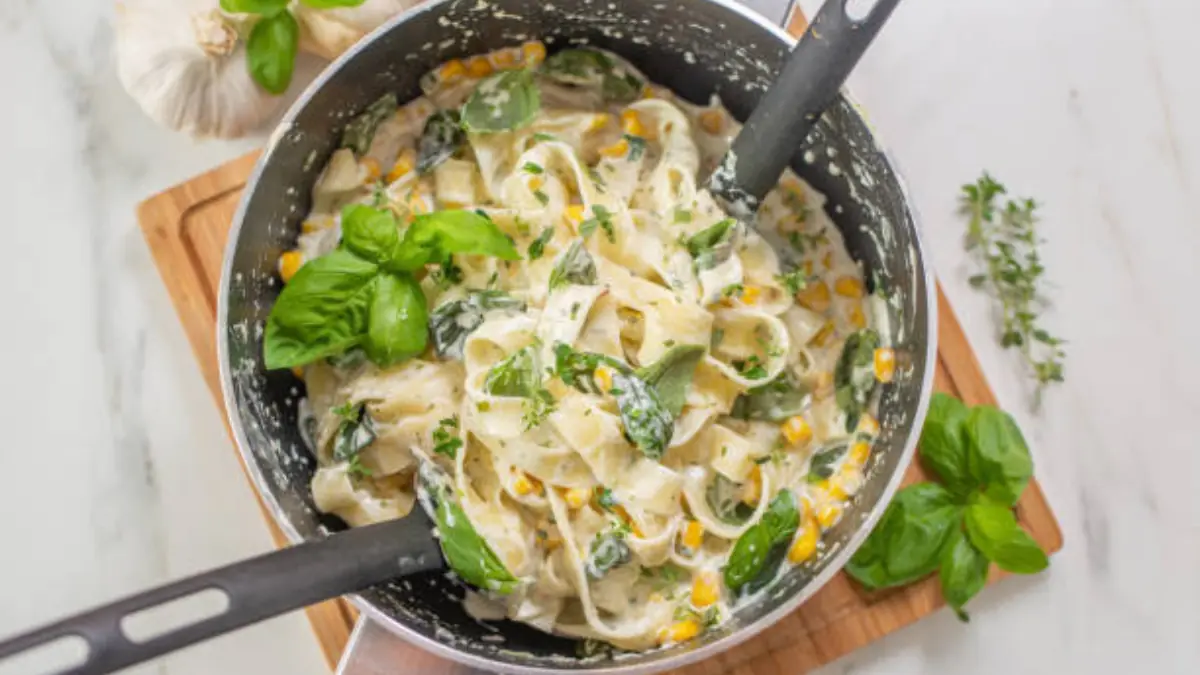One-pot pasta is a practical recipe that saves time and reduces the number of utensils used. The technique is simple: raw pasta is added to a pot along with water, milk, or broth, and cooked directly with all the seasonings and add-ins. As it simmers, the starch from the pasta thickens the liquid, creating a creamy sauce without needing extra flour or a separate roux. This method is popular among beginners, bachelors, and busy home cooks who want flavour without fuss.
In this version, garlic, onion, and mixed herbs create the base flavour. You can use milk or a mix of milk and water to get a light creamy texture. Some people also stir in curd at the end for a slight tang. Grated cheese melts into the hot pasta, giving richness without needing heavy cream. You can use grated Amul cheese, processed cubes, or Parmesan if available. For vegetables, add what you have: chopped capsicum, corn, mushrooms, or even spinach. If you eat meat, add shredded cooked chicken or sausage slices.
Since ev
One-pot pasta is a practical recipe that saves time and reduces the number of utensils used. The technique is simple: raw pasta is added to a pot along with water, milk, or broth, and cooked directly with all the seasonings and add-ins. As it simmers, the starch from the pasta thickens the liquid, creating a creamy sauce without needing extra flour or a separate roux. This method is popular among beginners, bachelors, and busy home cooks who want flavour without fuss.
In this version, garlic, onion, and mixed herbs create the base flavour. You can use milk or a mix of milk and water to get a light creamy texture. Some people also stir in curd at the end for a slight tang. Grated cheese melts into the hot pasta, giving richness without needing heavy cream. You can use grated Amul cheese, processed cubes, or Parmesan if available. For vegetables, add what you have: chopped capsicum, corn, mushrooms, or even spinach. If you eat meat, add shredded cooked chicken or sausage slices.
Since everything cooks in one pot, you’ll need to stir often to keep it from sticking. The liquid should just cover the pasta, so it gets cooked and creates a sauce. If it dries up too fast, just add a splash of more milk or water. It usually takes around 12 to 15 minutes, depending on the type of pasta used. Penne, macaroni, or fusilli work well because they hold their shape and absorb flavours better.
This recipe works as comfort food and is a good base for experimenting. You can adjust the seasoning, use chilli flakes, fresh basil, or even add a spoonful of pesto if you like. If you’re avoiding cheese, a dollop of cashew paste or mashed paneer can give it creaminess. The final dish tastes like a cross between mac and cheese and white sauce pasta, but without extra steps.
One-pot pasta is ideal for Indian kitchens without access to multiple burners or ovens. It’s also useful for hostellers or students with just a kettle or induction. The dish reheats well and doesn’t clump too much, making it suitable for next-day lunchboxes. It has carbs from pasta, fat from cheese or milk, and optional protein through meat or paneer, making it balanced enough for a full meal. A sprinkle of black pepper or oregano on top adds extra aroma before serving.








